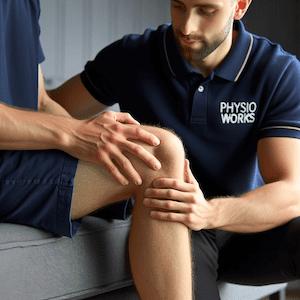Listen to Your Body’s Signals: A Guide to Safe Exercise
Introduction: The Importance of Body Awareness
When embarking on a new or intensified exercise regimen, it’s essential to listen to your body’s signals. This approach ensures both the effectiveness and safety of your routine, helping you to achieve your fitness goals without risking injury.

Understanding Your Body’s Responses
Pain or Discomfort: While some muscle soreness is expected, especially when engaging new muscle groups, pay close attention to persistent or unusual pain. Locating this discomfort and understanding its intensity is key.
Tension and Tightness: Noticing areas of tension or tightness can signal stress or the need for more stretching and rest. This awareness helps prevent injuries.
Breathing Patterns: If you find yourself out of breath, particularly during cardiovascular exercises, it’s a sign to evaluate your exertion levels. Watch out for shallow, rapid, or laboured breathing.
Monitoring Heart Rate: Keep an eye on your heart rate. An unusually high heart rate can indicate overexertion. Various tools like smartwatches or heart rate monitors can be helpful.
Dizziness or Light-Headedness: Experiencing these symptoms during or post-exercise could indicate hydration or blood pressure issues. It’s crucial to pause and assess these patterns.
Fatigue: Feeling tired after starting a new exercise routine is normal. However, excessive fatigue might be a sign of overexertion or insufficient rest.
During Exercise: Listen to Your Body
Breath and Heart Rate: Maintain a comfortable conversation level while exercising. This rule of thumb helps in monitoring your breathing and heart rate.
Pacing: Begin slowly and increase intensity or duration gradually. Listen to your body’s cues of discomfort and fatigue to adjust your pace.
Hydration and Nutrition: Stay hydrated and nourished. Proper nutrition supports your workouts and helps prevent symptoms like light-headedness or excessive fatigue.
Post-Exercise: Recovery and Reflection
Stretching: Incorporate stretching into your post-exercise routine. This aids in muscle relaxation and reduces soreness and cramps.
Muscle Fatigue vs. Pain: Differentiate between the two. Muscle fatigue typically feels like tiredness or heaviness, whereas pain can be sharp or persistent.
Recovery Time: Pay attention to how your body feels after exercising. A reasonable amount of fatigue that resolves quickly is normal, but lingering soreness may need attention.
Sleep and Energy Levels: Observe how your exercise affects your sleep and daily energy levels.
Nutrition: Rehydrate and refuel post-exercise. This aids muscle recovery and replenishes energy.
Workout Journal: Keeping a journal helps track workout details, fatigue levels, and any muscle pain or other symptoms. This is an excellent way to notice patterns and adapt as necessary.
Long-Term Monitoring: Adjusting and Adapting
Progress and Adaptation: Over time, you should notice improvements in endurance, strength, or flexibility. Consistency is crucial for these adaptations.
Injury Prevention: Continuously listening to your body helps in early injury detection and prevention.
Tracking Progress: Consider elements like performance, recovery, and overall well-being to gauge your progress.
Adjustments and Seeking Professional Guidance
Modify as Needed: Adjust your exercise routine based on your body’s responses. Gradual progression helps prevent overexertion.
Consulting Professionals: Persistent pain or unusual symptoms warrant a consultation with your PhysioWorks physiotherapist or GP. It’s crucial not to ignore these signs.
Conclusion: Balance and Self-Awareness
Listening to your body’s signals is essential in balancing a safe, enjoyable, and effective exercise routine. By applying these strategies, you can attain your fitness goals in a healthy manner.
“What to Do?” – Seeking Physiotherapy Advice
If you’re facing persistent issues or have concerns about your exercise regimen, it’s advisable to seek professional advice from a PhysioWorks physiotherapist. They can provide personalised guidance tailored to your body’s needs and signals.
Rochedale - Call 38410277
Book Online: RochedaleSalisbury - Call 32751044
Book Online: SalisburySandgate - Call 32691122
Book Online: SandgateRelated Articles
- Rotator Cuff Tear – Causes, Symptoms, Treatment: Discover the symptoms and treatments of a rotator cuff tear, including preventive measures to avoid such injuries.
- Gluteal Tendinopathy: Causes, Symptoms, And Treatment: Learn about the causes, symptoms, and treatments for gluteal tendinopathy, highlighting the importance of exercise in rehabilitation.
- Anterior Shin Splints: Key Symptoms, Managing, Tips & Care: Gain insights on managing shin splints, a common exercise-related issue, including prevention tips.
- Anterior Ankle Impingement: Causes, Treatments, Tips & Guide: Offers advice on dealing with anterior ankle impingement, relevant for understanding foot and ankle health during exercise.
- Biceps Tendinopathy: Causes, Symptoms, And Treatments: Provides information on biceps tendinopathy, including how to manage shoulder pain related to exercise.
- Frozen Shoulder (Adhesive Capsulitis) – Causes and Treatment: Explore the causes and treatments for frozen shoulder, emphasizing the importance of exercise and movement.
- Rotator Cuff Tendinopathy – Physio Advice: Insights into managing rotator cuff tendinopathy, underlining the role of exercise in shoulder health.
- Trochanteric Bursitis – Hip Bursitis: Causes & Treatments: Discusses hip bursitis and its relation to exercise, offering guidance on pain management and recovery.
- Calf Strain And Calf Tear: Physio Treatment, And Recovery: Information on treating calf strains and tears, crucial for athletes and individuals engaging in running or high-impact exercises.
- Effective Shoulder Impingement Treatment And Advice: Provides strategies for treating shoulder impingement, relevant for those experiencing shoulder pain from exercise.











































































